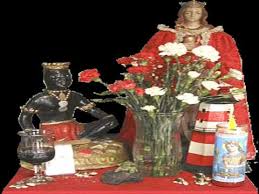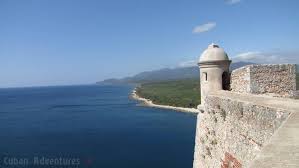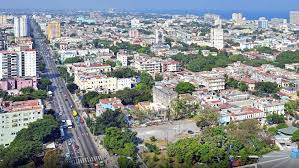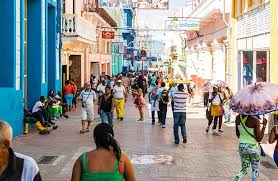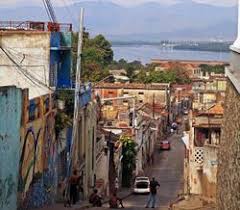TRADICIONES CUBANAS: SANTA BARBARA Y CHANGÓ, POPULARES ADORACIONES NACIONALES. PHOTOS
Los primeros negros africanos traídos a Cuba adoraban a Shangó, considerado un emperador de infinito poder y dueño del oráculo, pero imposibilitados de rendirle tributo abiertamente, tuvieron que identificarlo con Santa Bárbara, una virgen en la que creían los miembros de la religión católica en el país. Para los santeros Santa Bárbara es Shangó.
En Cuba, el 4 de diciembre es la fiesta de Santa Bárbara. Es una gran fiesta para todos los que creen en ella. La gente también asocia a Chango, una deidad orisha que los esclavos adoraban, con este día. Las celebraciones incluyen fiestas y bailes hasta altas horas de la noche. En la religión afrocubana de la santería, Santa Bárbara está sincretizada con Chango, la deidad del fuego, el relámpago y el trueno. La tradición cubana le dicta ofrendas de manzanas, rosas, puros y ron.
El hecho es que durante la etapa colonial la población negra de la isla era superior a la blanca y el homenaje cobró mayor significación, entre ellos, en detrimento del catolicismo, pero en la actualidad unos mantiene el rito a la deidad cristiana y otros se postran ante la excelsa y gallarda figura del Shangó.
HISTORIA DE SANTA BARBARA/SHANGO…
Santa Bárbara, una virgen y mártir cristiana del siglo III, forma parte de la lista oficial del martirologio de la Iglesia Católica.
Para los católicos Santa Bárbara nació en la Turquía asiática, con límites en el Mar Negro y a la edad de nueve años fue encerrada en una torre por su padre, quien quería protegerla de la vista de los hombres y del cristianismo, pero la joven dotada de gran inteligencia se percató de la falsedades de la doctrina pagana.
Ella logró entregarse a la fe cristiana y Dios la hizo santa, y entonces su progenitor enfurecido y temeroso de perder sus bienes materiales y privilegios otorgados por el Cesar, ordenó que la encarcelaran y la castigaran de forma cruel, y después el mismo la decapitó, pero en la leyenda ese día un rayo terminó también con su vida.
A menudo se representa a Santa Bárbara con una corona, cadenas en miniatura, espadas y una torre. Santa Bárbara sigue siendo una santa popular en los tiempos modernos, quizás mejor conocida como la santa patrona de los armeros, artilleros, ingenieros militares, mineros y otros que trabajan con explosivos, debido a la asociación de su leyenda con el rayo y el fuego.
Santa Bárbara aparece representa por una espada, con un paño de color rojo anudado al cuello y asimismo es poseedora del rayo y el trueno, y a ella se elevan las plegarias de los fieles ante las inclemencias del tiempo y con iguales atributos se reconoce a Shangó, un dios llegado desde África Occidental de la mano esclava.
LAS FIESTAS DE SANTA BARBARA Y SHANGO…
Santa Bárbara como Changó es la dueña del fuego, el relámpago, el trueno y la guerra, pero también es la patrona de la música, los tambores y el baile. En la santería, Chango es masculino y representa la belleza, la virilidad, la pasión y el poder masculinos. Sus colores son el rojo y el blanco, y su eleke (collar sagrado), está hecho de cuentas rojas y blancas alternadas. Por lo general, se requiere que los devotos se vistan de blanco y las mujeres con tela blanca con ojales.
Las fiestas de Santa Bárbara Bendita y el guemilere a Shangó, comienzan la noche del tres de diciembre y se extienden durante todo el día siguiente, al ritmo de los tambores, alrededor de un altar adornado con telas de color rojo oscuro, flores, velas y platos de harina de maíz, dulce de coco, plátanos maduros y verdes y golosinas.
Para decorar para este tipo de celebraciones, muchos devotos crean un altar con una estatua de Santa Bárbara en toda vestimenta real. El vendaje puede incluir un vestido de seda blanca cubierto con una capa de terciopelo rojo con adornos de piel blanca y larga. Junto a las ofrendas típicas mencionadas anteriormente, se pueden encontrar pasteles y dinero para asegurar la salud y la buena fortuna.
Los alimentos son degustados por los presentes y una parte es reservada a la deidad, mientras el sonido de los tambores imprime un toque solemne a la ceremonia que comienza con un canto dedicado a Elegba, catalogado como señor de los caminos y único que puede abrirlos o cerrarlos, según estime conveniente.
El ritual a Santa Bárbara, concluye con la entrada de Shangó, machete en mano, moviendose de un lado a otro del recinto, con ojos desorbitados y dientes apretados, como para imprimir mayor dureza a su rostro, y cuando dejan de sonar los de tambor se eleva la plegaria por Olofi, por Olodumare, salud y suerte.
CUBAN TRADITIONS: SANTA BARBARA AND SHANGO, POPULAR NATIONAL WORSHIPS. PHOTOS
The first African blacks brought to Cuba adored Shango, considered an emperor of infinite power and owner of the oracle, but unable to openly pay tribute to him, they had to identify him with Santa Bárbara, a virgin believed in by members of the Catholic religion in the country. For the santeros Santa Bárbara is Shangó.
In Cuba, December 4 is the feast of Santa Bárbara. It is a great party for all who believe in it. People also associate Chango, an orisha deity that slaves worshiped, with this day. Celebrations include parties and dancing until late at night. In the Afro-Cuban religion of Santeria, Santa Barbara is syncretized with Chango, the deity of fire, lightning, and thunder. Cuban tradition dictates offerings of apples, roses, cigars and rum.
The fact is that during the colonial period the black population of the island was superior to the white one and the homage gained greater significance, among them, to the detriment of Catholicism, but currently some maintain the rite to the Christian deity and others prostrate themselves. before the excellent and gallant figure of Shango.
SANTA BARBARA/SHANGO HISTORY…
Saint Barbara, a Christian virgin and martyr from the 3rd century, is part of the official martyrdom list of the Catholic Church.
For Catholics, Santa Barbara was born in Asiatic Turkey, bordering on the Black Sea, and at the age of nine she was locked in a tower by her father, who wanted to protect her from the sight of men and from Christianity, but the young woman endowed with great intelligence realized the falsehoods of the pagan doctrine.
She managed to surrender to the Christian faith and God made her a saint, and then her father, enraged and fearful of losing his material goods and privileges granted by Caesar, ordered her to be imprisoned and cruelly punished, and then he himself beheaded her, but in the legend that day lightning also ended his life.
Saint Barbara is often depicted with a crown, miniature chains, swords, and a tower. Saint Barbara remains a popular saint in modern times, perhaps best known as the patron saint of gunsmiths, artillerymen, military engineers, miners, and others who work with explosives, due to the legend’s association of her with lightning and lightning. fire.
Santa Bárbara appears represented by a sword, with a red cloth tied around his neck and is also the possessor of lightning and thunder, and the prayers of the faithful are raised to her in the face of inclement weather and Shango is recognized with the same attributes, a god arrived from West Africa by the slave hand.
THE FESTIVITIES OF SANTA BARBARA AND SHANGO…
Santa Bárbara as Changó is the owner of fire, lightning, thunder and war, but she is also the patron saint of music, drums and dance. In Santeria, Chango is masculine and represents masculine beauty, virility, passion, and power. His colors are red and white, and his eleke (sacred necklace) is made of alternating red and white beads. Devotees are usually required to dress in white and women in white cloth with buttonholes.
The festivities of Santa Bárbara Bendita and the guemilere a Shangó begin on the night of December 3 and continue throughout the following day, to the rhythm of drums, around an altar adorned with dark red fabrics, flowers, candles, and cornmeal dishes, coconut candy, ripe and green plantains and candies.
To decorate for this type of celebration, many devotees create an altar with a statue of Saint Barbara in all regal regalia. The dressing may include a white silk dress covered with a red velvet cape trimmed with long white fur. Alongside the typical offerings mentioned above, cakes and money can be found to ensure health and good fortune.
The food is tasted by those present and a part is reserved for the deity, while the sound of the drums gives a solemn touch to the ceremony that begins with a song dedicated to Elegba, cataloged as lord of the roads and the only one who can open or open them. Close them as you see fit.
The ritual to Santa Bárbara concludes with the entrance of Shangó, machete in hand, moving from one side of the enclosure to the other, with bulging eyes and clenched teeth, as if to make his face harder, and when the drums stop beating the prayer is raised for Olofi, for Olodumare, health and luck.
Agencies/ Wiki/ Arrajatabla/ Alberto Denis/ Extractos/ Excerpts/ Internet Photos/ Arnoldo Varona/ www.TheCubanHistory.com
THE CUBAN HISTORY, HOLLYWOOD.




